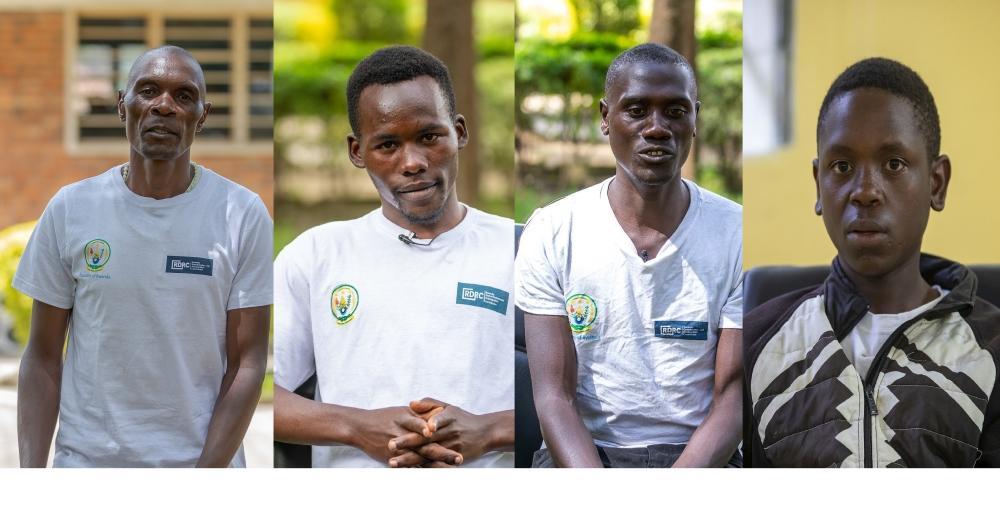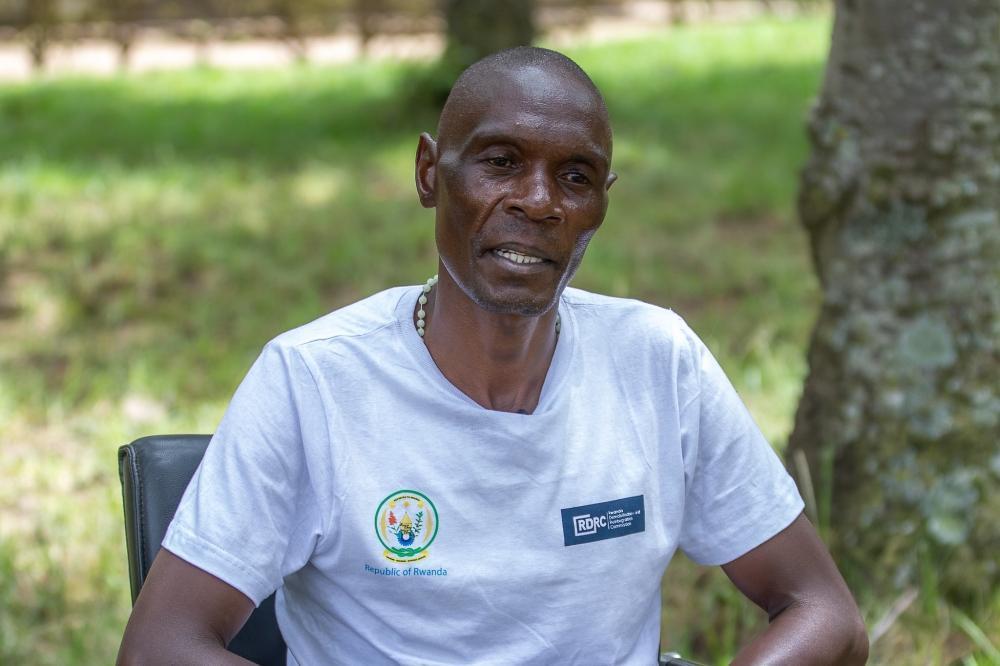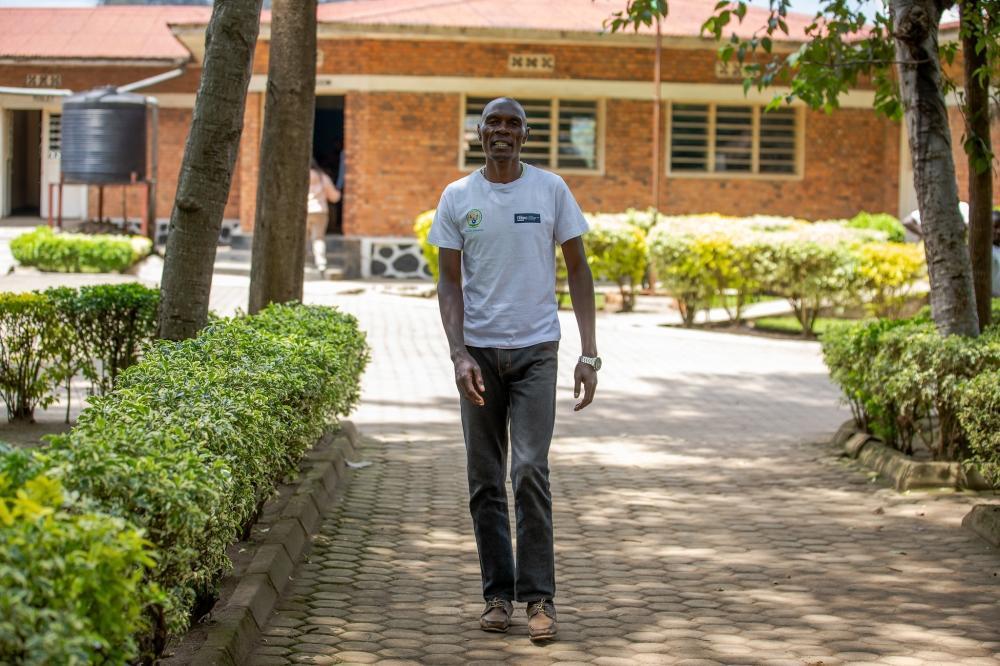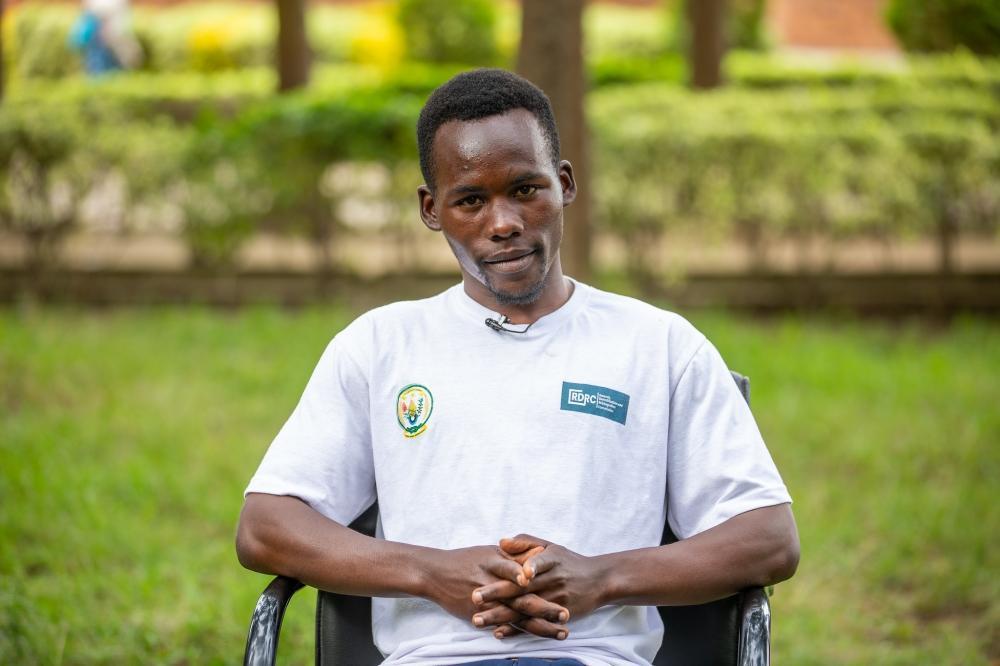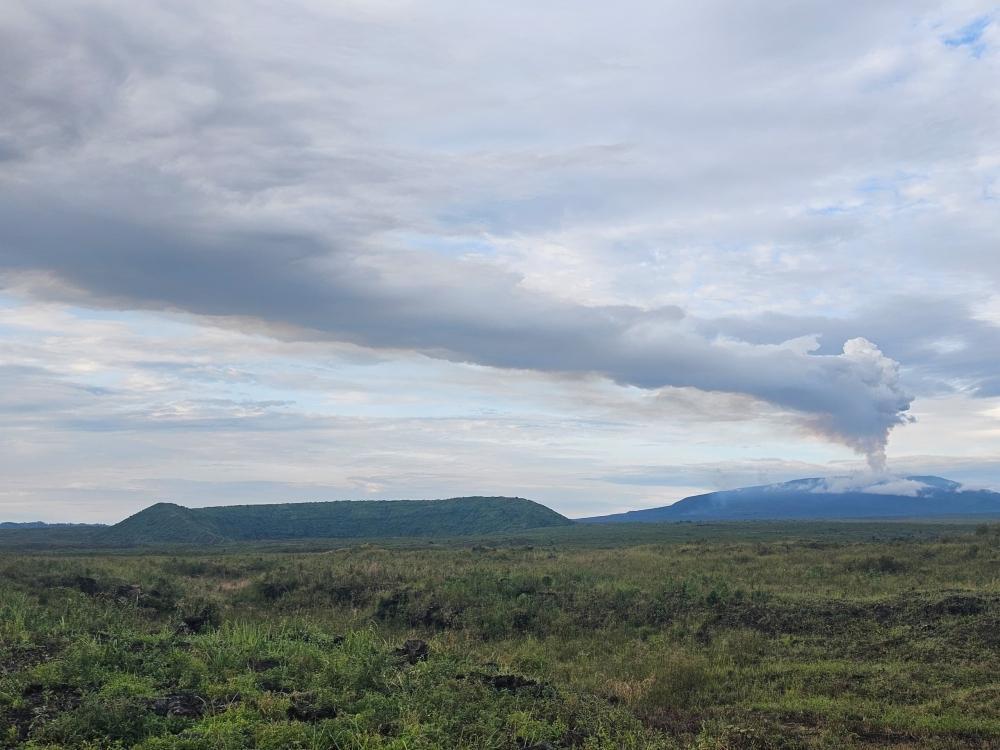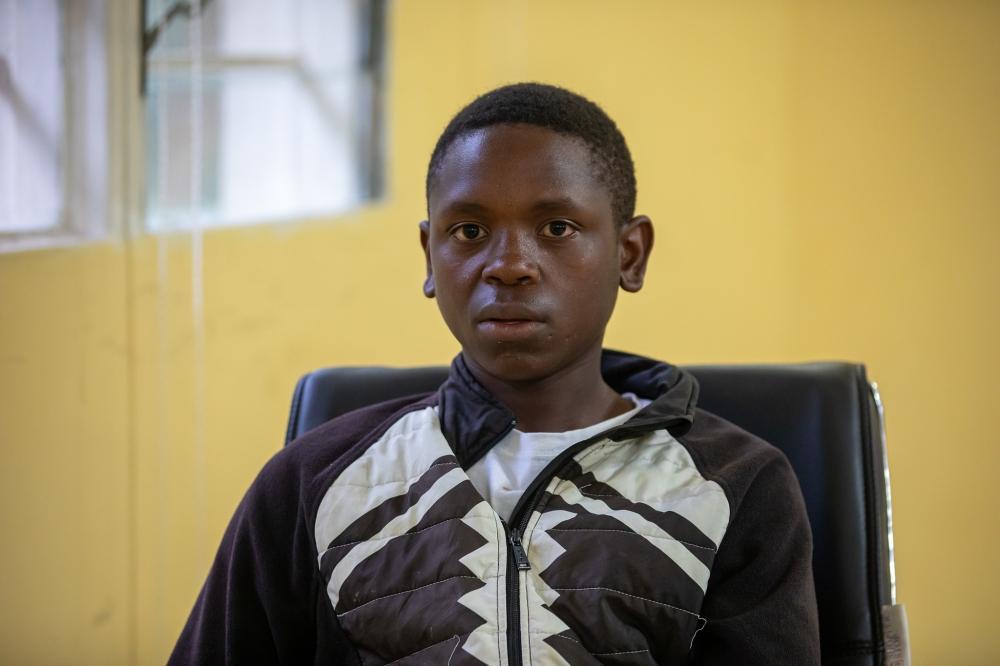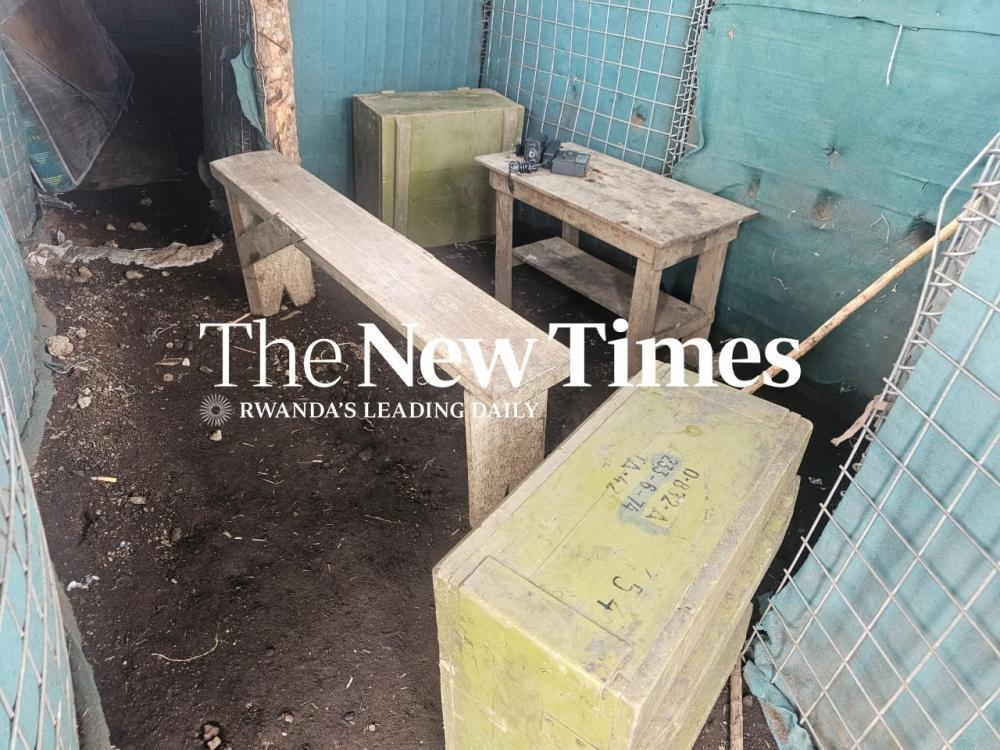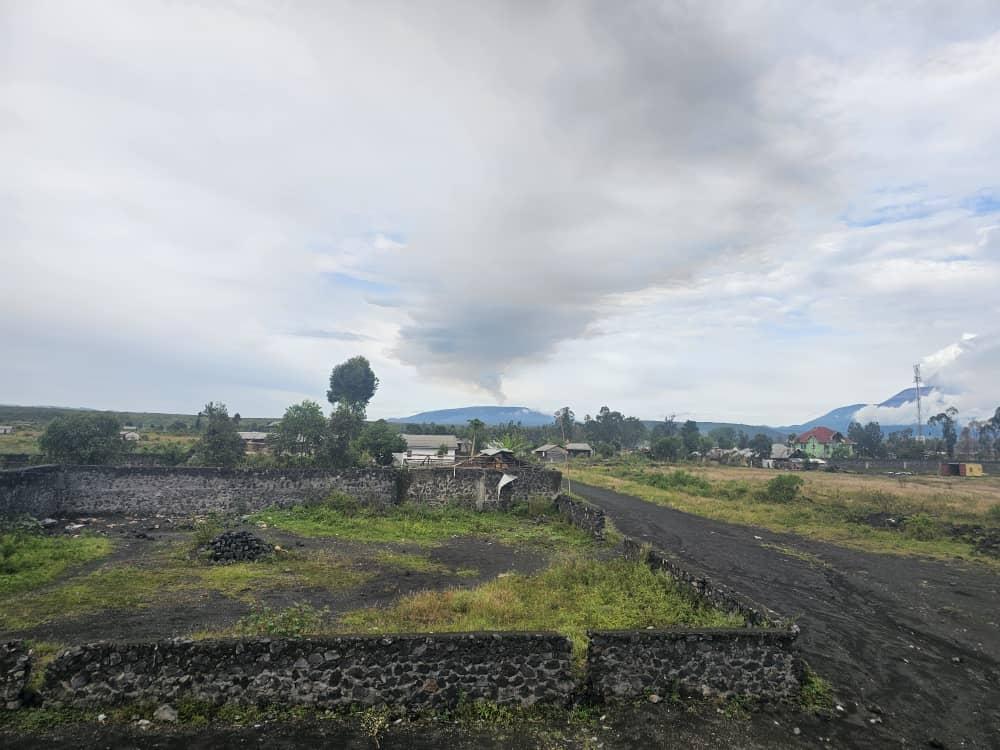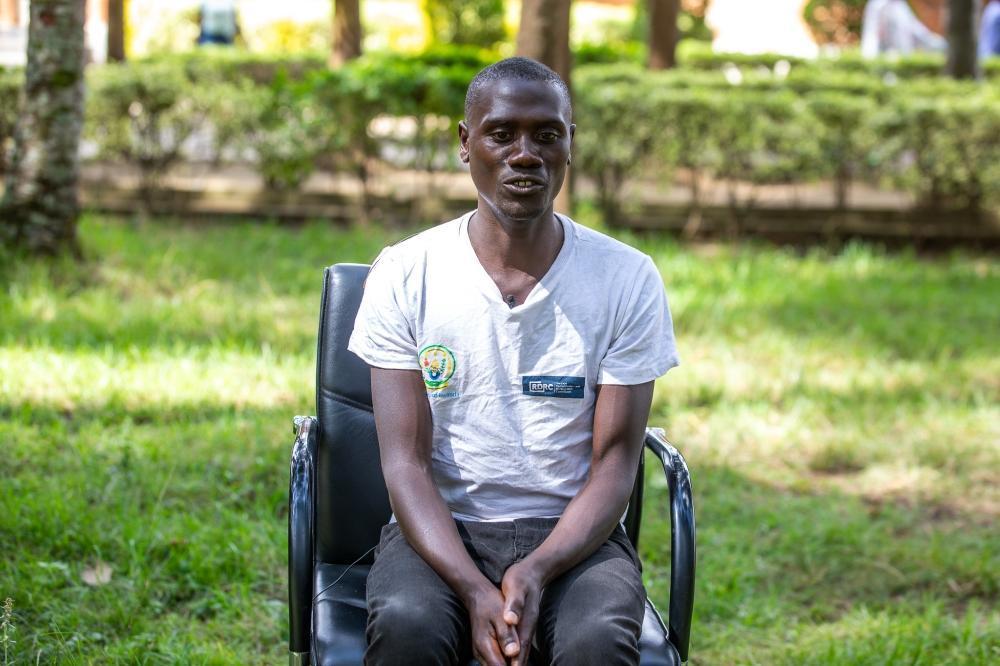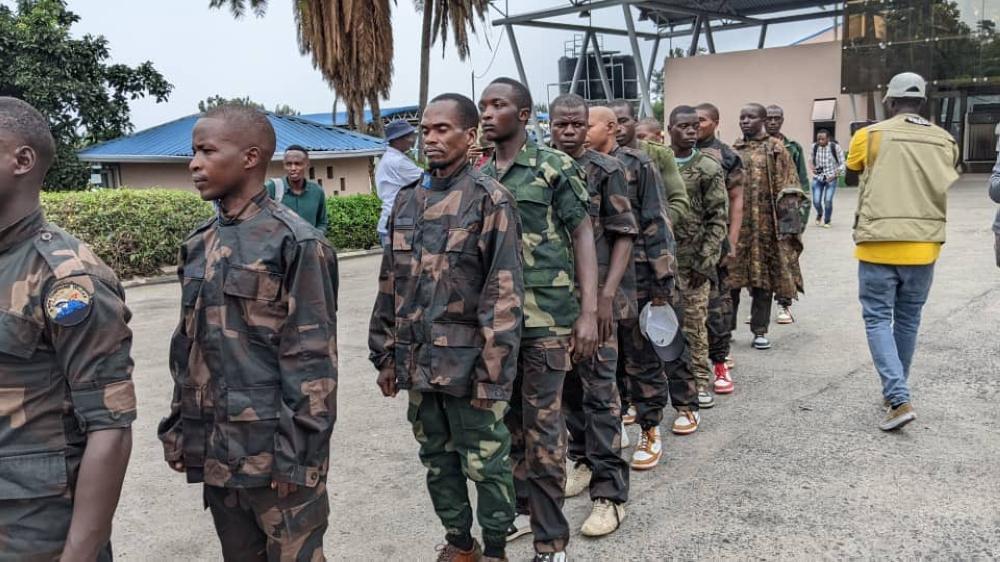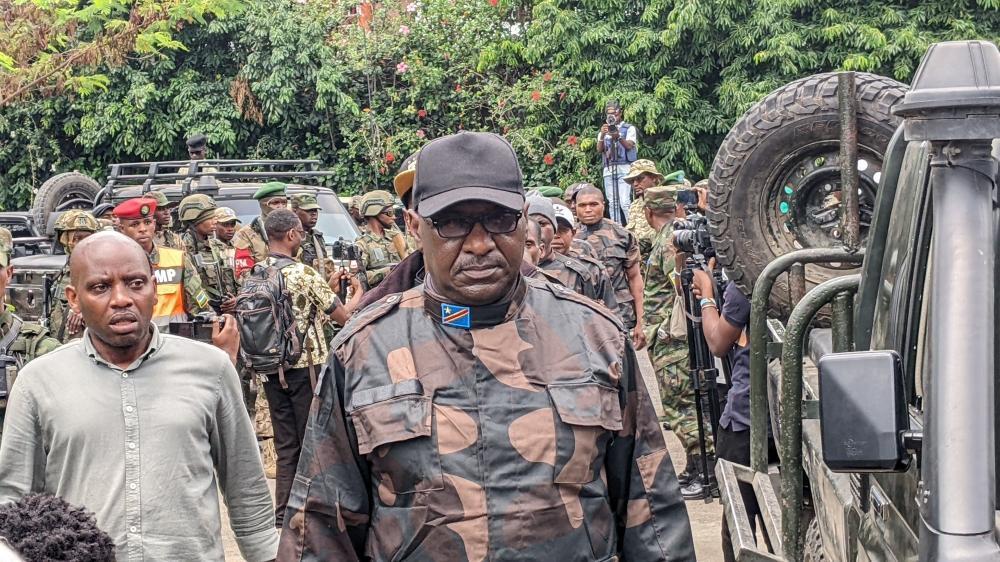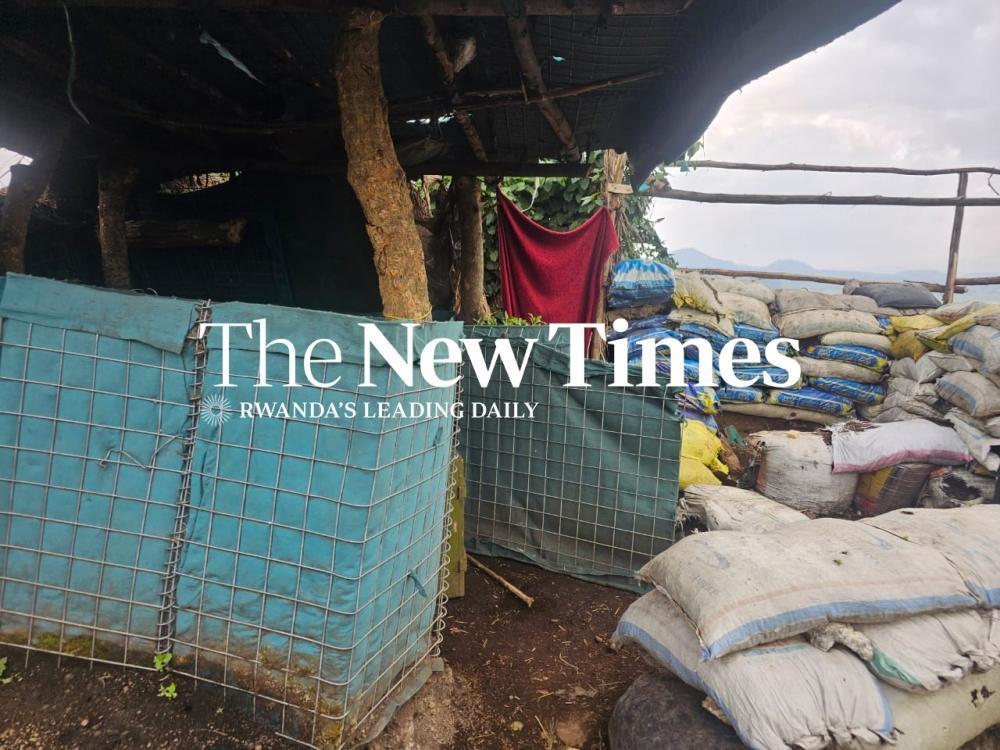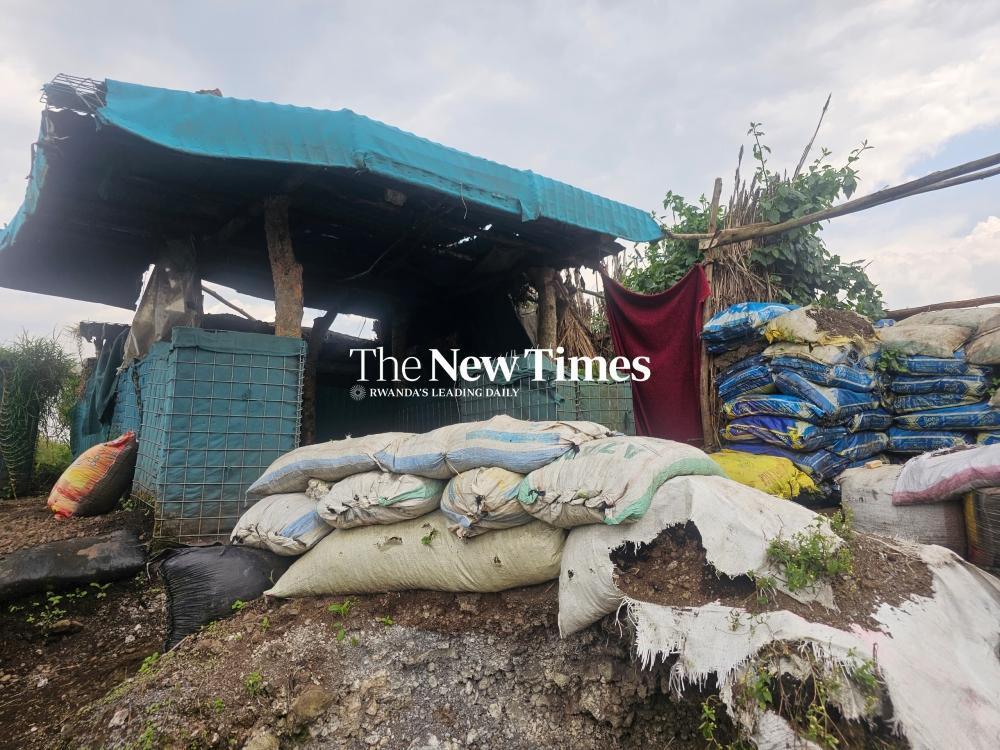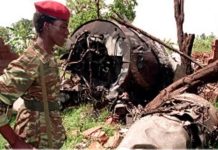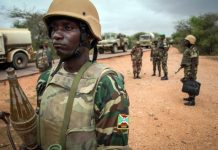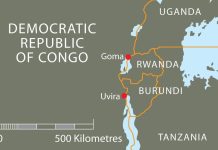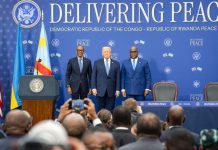Africa-Press – Rwanda. Fighters of the genocidal FDLR militia were given explicit orders to shoot on sight any Congolese soldier fleeing from the battlefield, it has emerged.
FDLR, founded by extremist elements linked to the 1994 Genocide against the Tutsi in Rwanda, is a key part of President Felix Tshisekedi’s coalition of armies, local and foreign militias, and European mercenaries, in the current conflict against the M23.
Listed by both the United Nations and United States as a terrorist organization, the FDLR has received a major boost from Kinshasa, emerging as a key player in the current war.
Now former FDLR combatants, including those captured on the battlefield and those who deserted the war, have revealed the militia was given powers to shoot any FARDC soldier who attempted fleeing for dear life.
“We had clear instructions to watch them,” Corporal Olivier Cyuzuzo, a 29-year-old former FDLR militia fighter said last week. If any FARDC soldier appeared to retreat on their own, he said, “we shot them, literally on sight.”
ALSO READ Inside FDLR’s frontline base 3km from Rwanda border
The former rebels are attending a pre-integration course at the Mutobo Demobilisation Centre.
Based in Musanze, the facility is run by the Rwanda Demobilisation and Reintegration Commission, which has helped re-integrate tens of thousands of former combatants into the community over the years.
Cyuzuzo, who served in FDLR for 10 years, was a member of CRAP (Commando de Recherche et d’Action en Profondeur), the group’s special force.
He said his intake, which graduated after a three-month training course at Rugari in Rutshuru territory in 2014, comprised hundreds of new fighters, who were then deployed across different areas, including Nyiragongo, Tongo, Rubaya and Rutshuru.
At the time, he said, these areas had just been vacated by the M23 rebels when the latter withdrew from the North Kivu capital of Goma and other territories under heavy bombardment from UN forces. Majority of their fighters crossed to Uganda.
The M23 would later, in 2021, cross back into the Congo to wage the current rebellion over unfulfilled promises, and has since taken a large swathe of territory, including the key cities of Goma and Bukavu, the capital of South Kivu province.
All the former FDLR fighters we spoke to at Mutobo said it was common for FARDC commanders to request joint offensives with FDLR or to ask for specific FDLR fighters.
“Sometimes we mixed, or we gave them individual fighters for specific assignments, or sometimes we just fought alongside each other, in a coordinated approach, each group with a particular task,” one of them said.
‘Major’ Gilbert Ndayambaje during the interview with The New Times at the Rwanda Demobilisation and Reintegration Commission Center in Mutobo.
Maj, Gilbert Ndayambaje, 49, who joined FDLR back in 1998 before his capture earlier this year, said the militia was not only collocated with FARDC in the battlefield, but “they are fighting, and losing, together.”
This version was corroborated by a testimony from a former FARDC officer who we met in Goma last week. “In this war, FDLR are the ones occupying the most advanced positions, the ones doing the most fighting.”
Former FDLR member Major Gilbert Ndayambaje at the Rwanda Demobilisation and Reintegration Commission (RDRC) center in Mutobo, Musanze District
The former FDLR combatants at Mutobo also noted that FDLR was a key ally of the Burundian forces. “We fought together in Nyabibwe (in Kalehe territory) and many other areas,” Ndayambaje said.
At least 10,000 Burundian troops are in DR Congo as part of a coalition of foreign forces, militias and mercenaries backing the Congolese army (FARDC).
The ex-FDLR fighters we spoke to said President Felix Tshisekedi had actively mobilised and armed FDLR, with a promise to help them overrun Rwanda after M23’s defeat. The militia has since grown to anywhere between 7000 and 10,000.
To scale its recruitment effort, the militia has cut the duration of training for new fighters from three months to one, they said.
‘Most of us were forced to join’ militia
Born in Tuonane in Masisi territory, Cyuzuzo said that conscription has been a key part of FDLR’s recruitment strategy, targeting mostly young people and even minors. “Most of us were forced to join, they coerce you or sometimes they just manipulate you.”
We asked Cyuzuzo to explain what he meant by ‘manipulation’ and he said “FDLR is driven by the genocide ideology, when they recruit you, they tell you the intention is to come back to Rwanda and remove the people in power today.”
29-year-old Corporal Olivier Cyuzuzo had served in FDLR for 10 years.
“They manipulate you by instilling fear in you and claiming that Rwanda has a government of only the Tutsi and that they are just killing the Hutu population,” he added.
It is also part of FDLR’s modus operandi to target the Tutsi of DR Congo, he said.
“They say they are the same as those from Rwanda.”
Increasingly, this account left Cyuzuzo confused, as he grew older, he said. “It kept troubling me. Deep down, I got confused because growing up seeing Tutsi children (in Masisi) I didn’t have any problem with them, neither their parents; they hadn’t done anything wrong to us, but then here is someone who’s your leader telling you how those people are evil and should not be tolerated.”
Contradictions, lies and manipulation…
“I failed to reconcile that contradiction, what I grew up seeing and what I was being told were totally different things.
“Later, as I grew older, I came to realise that it was the ideology of genocide behind the manipulation and lies.”
That’s what would eventually prompt Cyuzuzo’s decision to desert the militia last year, he said.
At Mutobo, we also spoke to 17-year-old Celestin Nahimana, who was forcibly recruited into FDLR in 2021 at the age of just 14. Like Cyuzuzo, he was a member of CRAP – which Cyuzuzo estimated at around 3000 fighters, although some suggested a much smaller figure.
“They picked me up from the road in Kalenga (in Masisi), along with other children and forced us to carry their supplies on our heads, walking for three days,” he recalled. They were four children when a group of about 10 militiamen abducted them.
“We were at our village trading centre in Kalenga, where I was selling phone credit, they had other young people in their company whom we later learnt were going for training.”
“Just like that, they forced us to carry their foodstuff, namely, rice, maize flour, cooking oil.
When we finally arrived, they couldn’t let us go back. They said we must join the others in training and then the frontlines, assuring us we would defeat M23 and then proceed to Rwanda,” said the former child soldier.
Nahimana, the sixth child in a family of eight, said that his first deployment was in the areas around Nyamulagira mountain, where he saw three of his fellow fresh recruits killed with machetes because they had attempted to flee.
“Two others had managed to flee but they were tracked down and killed in Mugunga (outside Goma).”
A view of (left-right) Shove, Nyamulagira, and Nyiragongo as captured by this writer from Kasengese on the Goma-Sake road Wednesday, March 19. Kasengese is the locality where former North Kivu province governor Gen Peter Cyirimwami was killed in battle late January. Photo by James Munyaneza
At Nyamulagira, Nahimana and the other newly enlisted fighters joined a CRAP unit which protected FDLR’s overall commander Gen Pacifique ‘Omega’ Ntawunguka, who had relocated to this mountainous hideout from his former headquarters in Paris in Rutshuru territory.
Later, Omega and his CRAP protection unit relocated to Mount Shove, some 30km northeast of Goma and close to Sake and Mubambiro, in the wake of M23 advances from the north.
Gen Omega’s relocations and Col Ruhinda’s setback
FDLR maintained combat units in and around Sake and Mubambiro (Bambiro), partly explaining Omega’s choice to move to Shove. We learnt during our visit to Goma last week that there are FDLR elements still trapped in the rugged pockets of Shove Mountain.
In the months before the M23 captured Goma on January 28, FDLR deployed heavily along the various axes that protected the city (notably, Goma-Kanyamahoro-Kibumba (northeast); Goma-Nyakagina-Rusayo (north); and Goma-Bambiro-Sake (northwest).
When Omega relocated to Shove, a new road was constructed linking the remote area to Kasengese (on Goma-Sake road) to allow for smooth flow of supplies and combat reinforcements.
As well as FDLR, FARDC and the Wazalendo militias, other coalition partners, including SADC forces, UN troops (MONUSCO), Burundian forces and European mercenaries had deployed heavily on the Goma-Bambiro/Sake axis.
For more than a year, these coalition forces faced off with M23 units that held their ground across a range of several strategic high grounds above Sake, which had also cut of Sake-Minova road (this reporter was back in Sake and Bambiro last week and the battle for these localities will be told in an upcoming story).
However, Omega would later relocate from Shove to Kumugogo (behind Kanyagoma), around 10km east of Kanyamahoro. That was after FDLR suffered a major setback following the killing of Omega’s righthand man and CRAP commander Col. Protogene Ruhinda Ruvugiyimikore by M23 in late 2023.
Ruhinda’s death dealt a heavy blow to the FDLR and its efficiency in Tshisekedi’s grand plan to fight M23 and to invade Rwanda, according to both the ex-FDLR combatants and keen observers.
Still, FDLR retains a critical role in Kinshasa’s war effort, with Nahimana, Major Ndayambaje and Corporal Cyuzuzo all agreeing on this. “In the battlefield it’s the FDLR who are fighting for Congo, they are the ones in the front, I personally was on the frontlines and that’s what’s happening,” Nahimana said.
In the event of joint offensives, an FDLR commander would oversee the operation, even if he was at a lower rank than his FARDC counterpart, they said.
In some cases, the former FDLR combatants said, the militia would give their officers higher ranks temporarily, added Eric Hategekimana, 29, another former FDLR fighter, who said he had been conscripted by the militia in 2012.
For instance, he said, several FDLR officers at the rank of Lieutenant were temporarily given the rank of Major after Tshisekedi invited the genocidal militia to join his war effort.
A demoralised national army
Such actions, and with the European mercenaries drawing a salary at least 60 times that of a regular Congolese soldier, and Burundian soldiers paid considerably more, many FARDC soldiers were left demoralised and unwilling to risk their lives.
Several Congolese generals and commanders have also been accused of abandoning troops and military equipment in battlefields and losing territory after territory, many subsequently getting arrested for alleged cowardice.
Meanwhile, for young FDLR fighters, it just doesn’t make sense to risk their lives fighting for a foreign government, while the rewards are enjoyed by a small clique of ideologues that maintains a stranglehold on the militia.
“Tshisekedi supplies FDLR with arms, medicine and food, everything,” Ndayambaje said, adding that the militia leaders were profiting from the ongoing conflict.
He corroborated earlier assertions that Brig Gen Ezechiel Gakwerere, the FDLR secretary-general, who the M23 captured and subsequently handed over to Rwanda – along with Ndayambaje himself and 13 others – early this month, was the liaison between FDLR, and FARDC and the other coalition partners.
Celestin Nahimana, 17, was conscripted into FDLR at the age of 14.
Nahimana, the teenager, said FDLR leaders had manipulated many young Rwandans, like himself, into believing they had a genuine cause to fight for.
“So many (FDLR combatants) lost their lives in combat for nothing, what I saw pushed me to overcome my fears and walk away, I had seen enough,” he added.
It was during heavy fighting around Kanyamahoro (within 3km from Rwanda) last year that the former child soldier made up his mind to escape to Mugunga where his mother lived, with a plan to eventually return to Rwanda.
He subsequently made his way to a UN base in Goma from where he was repatriated to Rwanda, arriving at Mutobo on January 9.
“What I saw in Kanyamahoro is unforgettable. A lot of my colleagues died there, unfortunately for no reason, it’s the leaders who were manipulating us and made us believe in a lie.”
Born in Nyagatare, the youngster had left Rwanda as a young boy, heading to Masisi with his parents, whom he said had agricultural land there. His father died of suspected poisoning in Masisi while his mother is likely still in Mugunga, he said.
‘I’m proud to see former colleagues in RDF uniform’
One of his siblings who was in Rwanda played a key part in his ultimate decision to desert fighting and come back home to Rwanda, he said. “He kept in touch and that helped me know the truth.”
Reflecting on his time in FDLR, he pointed to intense battles he was involved in, battles he said had no legitimate cause “because the people they always told us were evil and killers are the same people that received me and are treating me well here.”
“There are former colleagues who came before us and they have been treated kindly, including my own brother,” he added.
Many ex-FDLR combatants have since been integrated into the Rwanda Defence Force (RDF), with our interviewees even telling us they had spotted and spoken to some of them – now in RDF uniform.
“We see some of them proudly discharging their duty and patrolling outside of this compound,” Cyuzuzo beamed, adding he too was ready to follow in their footsteps, given the opportunity. “I am proud to see them serve their country after what we went through together.”
Hategekimana, a Rutsiro-born former combatant who relocated to DR Congo with his family back in 2005, said he hoped his former colleagues “still trapped in FDLR ideology will soon muster up enough courage” to abandon the militia.
‘Nobody could believe how it all collapsed’
“We are one people, Rwandans, and this country is ours to build and protect,” said the former militia fighter, who was keen to point out he survived fierce battles in places like Kanyamahoro and Kwamadimba.
Inside what used to serve as FDLR’s frontline command post at Kanyamahoro on the Goma-Kibumba axis. Photo/James Munyaneza.
The former FDLR combatants confirmed to The New Times that an FDLR Major known as Benjamin Ndimubutumwa had once been the commanding officer of what used to be an FDLR base at Kanyamahoro, within 3km from the Rwandan border, as part of an 18km-streth of collocated encampments of pro-Kinshasa coalition forces along the Goma-Kibumba axis.
But both the commanders and their troops kept rotating with a new group taking over, he said.
They also confirmed that FDLR maintained supportive units in possession of artillery in the elevated grounds behind Kanyamahoro, Kilimanyoka and the other sites where the other coalition troops held positions on the Goma-Kibumba axis, as previously reported by this publication.
Shove (centre) under the shadows of ash-lava spewing Nyamulagira Mountain (left) and Nyiragongo Mountain (right) was once a stronghold of FDLR, serving as the base of Gen Pacifique ‘Omega’ Ntawunguka. This photo was taken from Mubambiro/Bambiro military barracks near Sake on Wednesday, March 19. Photo by James Munyaneza
Some of the hills in question include Kanyagoma, Nyamushwi, Kanyabuki and Amabere y’Inkumi, which also protected Omega’s base at nearby Kumugogo.
The New Times toured the military trenches of the coalition forces (FDLR, FARDC’s Hiboux special, SADC forces, and European mercenaries) on this axis, and discovered that they all face in the direction of Rwanda (eastwards), just like the artillery weapons that were abandoned there – even as the M23 were occupying positions to the north.
This, along with the discovery of vast armories of higher-caliber weapons and ammunitions in Goma, and information obtained from a joint command centre of the coalition forces at the Goma airport, have dispelled suggestions Tshisekedi’s public threats to invade Rwanda were mere rhetoric.
“It was a matter of time because everything seemed to be in place for a decisive assault,” said Ndayambaje. “Nobody could believe how it all collapsed.”
Eric Hakizimana fought against M23 in different localties, including Kanyamahoro and Kwamadimba, before his capture earlier this year.
Some FDLR genocidal group members that were captured by the M23 rebels on arrival at the Rwanda border in Rubavu District on March 1. Photo by Germain Nsanzimana
On March 1, the AFC-M23 handed over Brig Gen Ezechiel Gakwerere of the genocidal militia FDLR to Rwanda. Photo Germain Nsanzimana
Overlooking Rwanda’s Busasamana sector, Kanyamahoro was a strategic base for Tshisekedi’s coalition. This is what used to be the FDLR’s command post at the base. Photo/James Munyaneza.
A make-shift structure that used to serve as an FDLR/CRAP command post in Kanyamahoro, three kilometres from Rwandan border. Photo by James Munyaneza
For More News And Analysis About Rwanda Follow Africa-Press

